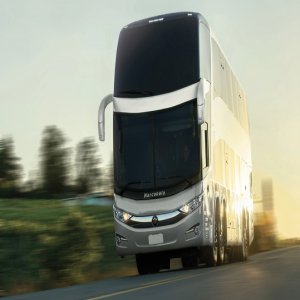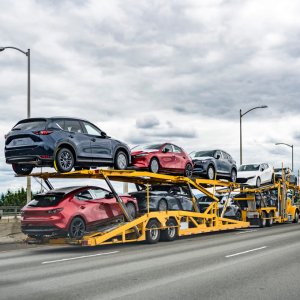Market Research Unveiling Necessary Customer Focus

STORY INLINE POST
Q: What key factors does J.D. Power use to help companies retain and grow their business?
A: Our 2014 study identified four main factors: quality of the vehicle, service satisfaction, cost of ownership, and the appeal of the vehicle, which is defined by the car’s performance and features. Out of these four, the most relevant factor for the Mexican market is the appeal of the car, adding up to 66% of the total amount of customer satisfaction. The next most important factor is quality, then cost of ownership, and finally service satisfaction. However, during the last 12 months we have observed an increase in service satisfaction importance, ranking just behind appeal of the vehicle. These rankings are different from those in markets like the US, Canada, or Brazil. The US, for example, has a more balanced relevance rate between all four factors. In Brazil, on the other hand, customers focus more on cost of ownership and service satisfaction, given the higher cost of the vehicles. This is not a problem in Mexico, where 600,000 people are able to buy a new car every year.
Last year, we added a study on satisfaction during the sales process, and this year we are splitting it into two different studies to offer more detailed information to the OEMs. The first one will be focused on the customer’s experience with the dealer and the second one is dedicated to the two year usage of the car. Therefore, we now have three studies for the Mexican industry, which makes us a more complete benchmark for the automotive brands.
Q: In 2014 1.1 million vehicles were sold in Mexico. What factors could help the industry grow that to 2 million?
A: Mexico is a very sensitive market, where any variation can cause a 50% drop in the industry’s potential. However, the country has regained some stability after the crisis of 2008, placing it in a positive position with similar market behavior to the US. The 1.1 million units sold last year were the second highest sales in Mexico’s history, just behind 2006, and sales are expected to increase by up to 1.4 million units over the next seven or eight years. It is hard to say when we will reach the two million mark in domestic sales, and it probably will not happen within the next ten years. If we compare Mexico to the US and Japan, in terms of population we are a third of the US, and in terms of territory we are four times bigger than Japan; that would mean that our market opportunity would be approximately five million vehicles per year. Since we rely on the economic growth of the country, it is most likely that we will reach that goal over a long-term period. In the medium term, we might reach the 2-2.5 million mark, but we also need to consider the import of used vehicles. There needs to be a market of used vehicles, given that they target a specific population segment, but there needs to be a proper regulation that controls the quality of imported vehicles. Sometimes it is possible to buy either a new compact car or a used SUV for the same price or even less, and two out of every three new vehicle clients have never been to the dealership. Capturing those clients earlier would be a massive opportunity in order to increase new vehicle sales.
Q: What should be the focus of OEMs to increase sales according to J.D. Power’s findings?
A: OEMs should be targeting emerging small markets like Mexico, Colombia, and Peru. Currently, the products offered in Latin America are the same as in the US with small modifications, but they do not fulfill the customer’s needs. OEMs are focused on producing affordable, compact vehicles that meet the requirements of the mass market in Mexico. However, the Mexican market is looking for alternatives that better fit their needs, such as bigger spaces, better fuel consumption, and new technologies. The challenge for OEMs is to develop the flexibility that allows them to reach all of their clients appropriately. That is why OEMs need to start thinking forward to provide state-of-the-art technology at affordable prices.
Q: How are companies progressing with educating Mexican customers in terms of new technologies, and what has been the general market response?
A: The customer’s satisfaction will depend on whether the gadget works or not. If they do not understand how the technology works, they will report it to the company as a malfunction. The engineers know how to operate their products, but the client is unlikely to have the same knowledge. Therefore, we provide this feedback to the OEMs so they can design their products focusing on the clients and their requirements. In Mexico, OEMs are doing poorly on this front. They are training their salespeople on how to use these technologies, but they are not listening to the input provided by the customers. They need to focus on how the clients operate, and they need to instruct their service providers so they can teach users how to use their cars correctly. It is not possible for a salesperson to offer the proper instruction without the appropriate support, especially with multimodal brands. There is still a great opportunity for OEMs to develop within the Mexican market, both in terms of feedback and customer instruction.
Q: What aspects were most important for Mexican clients when buying a new car in 2014?
A: Fuel economy has been the most important factor since 2013. Mexican customers are concerned about the rising price of petrol, which is reflected in their purchasing decisions. For the second year in a row we have seen a shift toward more rational decision making in the Mexican market. However, this depends on the population segment; the luxury market focuses more on the design and performance of the vehicle, while the mass market strives for a more efficient car. Nowadays, there are mass market cars that are in a similar price range as luxury cars, but their target customers are focused on the performance and fuel economy of the vehicle. Similarly, there are new luxury cars that are more compact and less expensive, but their target market is still focused on the design of the car.























